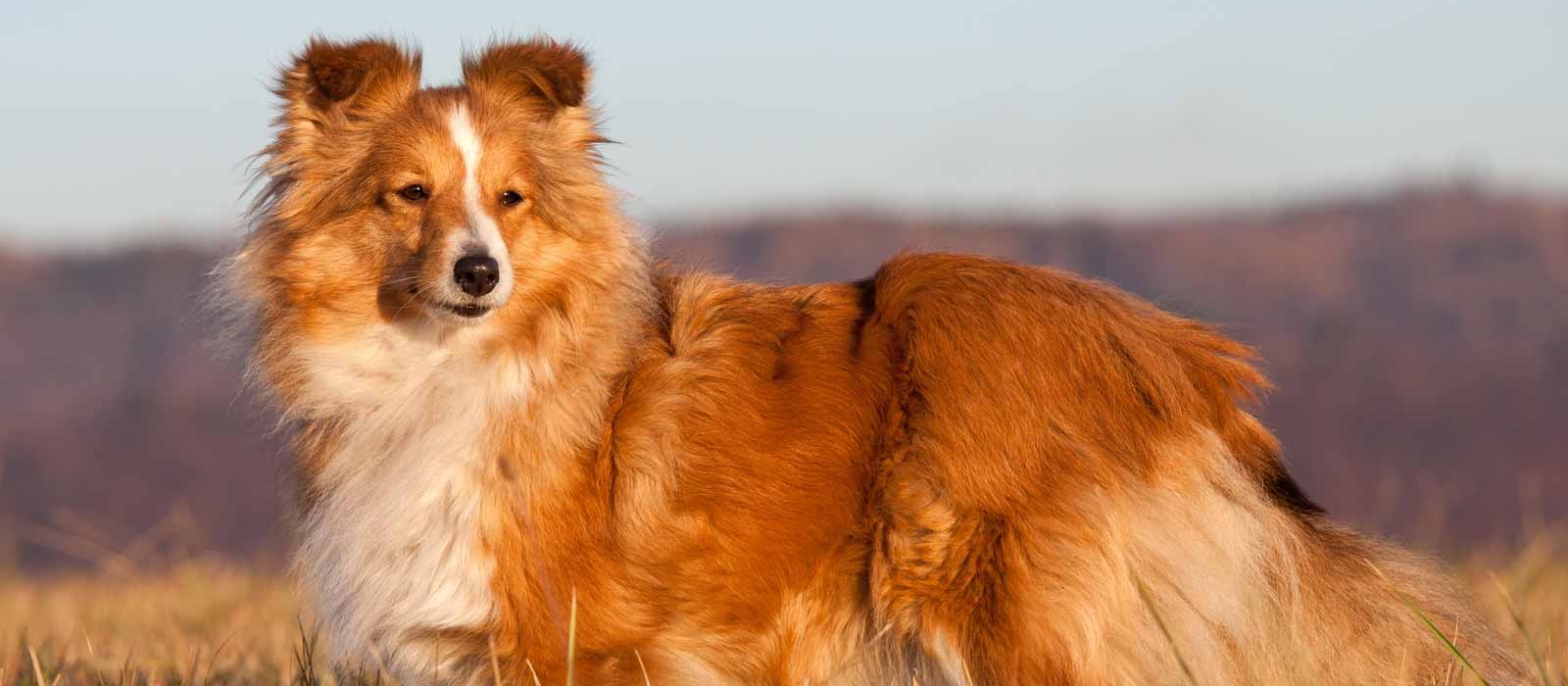-
Activity Level:
moderate
-
Shedding Level:
high
-
Grooming Level:
moderate
-
Trainability:
high
-
Good for Novice Owners:
high
-
Adaptability:
high
-
Kid/Pet Friendly:
often
-
Prey Drive:
high
-
Watchdog:
aware
- Average Size: Small
- Average Lifespan: 12-13 years
- Registered?: aca, akc
Sheltie Dog Breed Information
Overview
Temperament
Adaptability
Health
Owner Experience
Grooming
Activity Level
Size
Life Span
Did You Know?
The Shetland Sheepdog, affectionately called the Sheltie, is a herding dog that originated in the Shetland Islands of Scotland. Due to their resemblance to the Collie, they used to be called the Shetland Collie. After many objections from Rough Collie owners, the name was changed to Shetland Sheepdog as they were commonly used to herd sheep. They have also been known to be used for herding ponies and poultry as well. The AKC recognized the Shetland Sheepdog in 1911 as part of the Herding Group.
Shelties are loving, intelligent, and loyal. They are bright and energetic with playful personalities. They tend to get along well with children. Because Shetland Sheepdogs are small dogs, it’s important to supervise any playtime with children as they can be hurt by accidental falls or rough play. Shetland Sheepdogs are also excellent watchdogs. They will bark to alert you and also tend to be reserved towards strangers. Once they’re introduced and get used to them, a Sheltie will open up as they become more familiar.
Shetland Sheepdogs are highly adaptable dogs. They do very well in homes with well-fenced yards and can also adapt to apartment living as long as they get plenty of exercise and mental stimulation. They also do well in most climates. As with most dog breeds, they are sensitive to extreme heat and cold. Because they are so in-tune with their families and crave human affection, they do not do well with a lot of alone time.
The Sheltie is a generally healthy dog breed. As with all dogs, there are some health conditions to be aware of, including epilepsy, Sheltie skin syndrome or dermatomyositis, eye disease, von Willebrand’s disease, thyroid disease, hip dysplasia, and gallbladder mucoceles. Good breeding practices and genetic screening can help reduce the chance of passing on several of these health issues. Don’t be afraid to ask the breeder about the genetic history of the parents and to see any relevant health clearances. This information can help allay potential health concerns.
The Sheltie is a highly intelligent, bright, eager, and obedient dog, which makes them a highly trainable dog breed and a good fit for owners of any experience level. They are sensitive and are very in tune with the moods of family members and the household. Shelties respond best to consistent and positive training.
They tend to be vocal and may express their happiness and excitement by barking. Training early on can help teach your Sheltie to respond to a command to stop barking. Being a herding dog, a Shetland Sheepdog has an innate urge to chase moving things, which can sometimes also include cars. They should be kept on a leash at all times and should only let off-leash when they are inside or in a securely fenced-in area.
The Shetland Sheepdog has a long, straight, and harsh coat with a dense undercoat. Common coat colors include blue merle, sable, and black with white markings. They require a good brushing a few times a week to remove loose fur, work out tangles, and prevent mats. They will shed considerably year-round and will go through two heavier seasonal shedding sessions, which may require more frequent brushing. A short cut or shave is not recommended for this dog as their long coat provides protection for them from heat and sunburn in the summer and provides them with warmth in the cold. The occasional bath is sufficient for this dog breed.
In addition to coat care, there are other grooming tasks all dogs need. It’s important to keep your dog’s nails trimmed. Nails that are too long can get caught in things and make movement painful for your pup. Usually, trimming nails monthly is sufficient. Ears can trap moisture, dirt, and debris, which can lead to infection. Checking your dog’s ears regularly and carefully cleaning them as needed can help prevent ear infections.
Dental care for dogs is one of the most overlooked grooming tasks. Just like you, your dog will develop gum disease and could suffer from tooth decay if their teeth are not cared for. Brushing your dog’s teeth or using an enzyme toothpaste every day is the best way to care for your dog’s teeth and gums. You can also supplement these efforts with a dental care diet or dental chews. It’s a good idea to get your Sheltie used to having their mouth, paws, and ears handled as a puppy. This will help make grooming much easier for both of you throughout their life.
Shelties have a moderate activity level. They may be herding dogs that are active and athletic by nature, but they will tend to adapt to their family’s lifestyle. A few walks a day with some time to run will provide enough exercise for a Shetland Sheepdog. They will also enjoy extra activities like going on a hike, running with you, taking a trip to the dog park, or training for dog sports. They tend to excel in several canine sports, including agility, tracking, obedience, and, of course, herding.
A full-grown Sheltie usually stands between 13 and 16 inches tall at the shoulder and weighs between 14 and 27 pounds.
The Shetland Sheepdog generally lives 12 – 13 years.
The Shetland Islands are rocky, so they were inaccessible for a long time, which kept Shelties relatively isolated. Because of this, the dog breed did not become widely recognized until the early 20th century in the rest of Britain.






